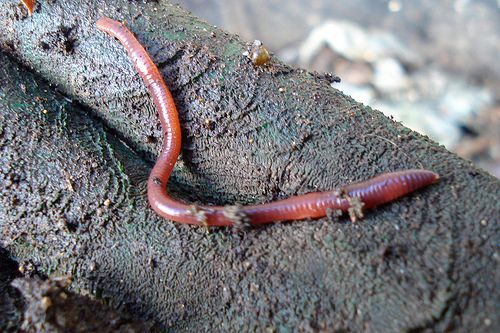Red Wigglers: The Unsung Heroes of Organic Waste Recycling
Red wigglers, or Eisenia fetida, work as crucial representatives in the natural waste reusing process, changing thrown out materials right into valuable vermicompost. Their reliable breakdown of natural matter not just improves soil high quality but additionally adds to sustainable waste monitoring methods. As the globe increasingly seeks options to battle waste buildup and boost agricultural efficiency, comprehending the role of these worms becomes crucial. What systems enable them to prosper in compost settings, and how can they be properly used in both property and industrial setups? Discovering these inquiries exposes the broader ramifications of vermicomposting in our environmental landscape.
What Are Red Wigglers?
The impressive durability of red wigglers, scientifically referred to as Eisenia fetida, underscores their essential duty in natural waste recycling. These tiny, reddish-brown earthworms are normally located in breaking down natural issue, such as compost heap and manure loads. Lake Hickory Bait. Unlike other earthworm species, red wigglers flourish in nutrient-rich settings and are very efficient at damaging down organic products, making them important for vermicomposting

(Lake Hickory Bait)Along with their role in waste decrease, red wigglers add to dirt health and wellness by improving dirt structure and oygenation via their burrowing tasks (Lake Hickory Bait). Their presence in composting systems not only boosts decay prices yet likewise promotes a sustainable strategy to squander monitoring, showing their relevance in eco-friendly conservation initiatives
Advantages of Composting With Worms
Composting with worms, especially red wigglers, offers various benefits that enhance both waste management and dirt health. First, these worms effectively break down natural waste, converting it right into nutrient-rich vermicompost that improves soil. This procedure speeds up disintegration, enabling a faster recycling of kitchen scraps and various other natural materials contrasted to standard composting techniques.
In addition, the vermicompost created by red wigglers is including valuable bacteria, which aid improve dirt framework, aeration, and wetness retention. This boosts the total health and wellness of plants, promoting vigorous development and increased returns in gardens and agricultural setups. The use of worms in composting decreases the manufacturing of greenhouse gases, such as methane, contributing to an extra sustainable waste management system.

Exactly How to Beginning Vermicomposting
Developing a vermicomposting system is a straightforward process that can produce substantial advantages for both waste monitoring and dirt enrichment. To start, choose an appropriate container, such as a plastic container or wooden box, with appropriate air flow openings to make certain proper airflow. The dimensions should preferably be about 2 feet by 3 feet, enabling adequate area for the worms to prosper.
Next, prepare bed linens product, which can be composed of shredded paper, cardboard, or coconut coir. This bedding ought to be moistened to create a suitable habitat for the worms. When the bed linens remains in location, introduce red wigglers (Eisenia fetida) into the container, generally around one pound of worms for every square foot of surface location.
Adhering to the placement of worms, add organic waste, such as vegetables and fruit scraps, coffee grounds, and smashed eggshells. Prevent including dairy products, meat, or oils, as these can produce odors and bring in bugs. Ultimately, place the bin in a shaded, temperature-controlled area to keep ideal conditions for worm activity. With these steps, you will effectively launch a vermicomposting system that adds to sustainable waste management and improves your dirt.
Maintaining a Healthy And Balanced Worm Bin
(Red Wiggler Express)Keeping a worm container prospering requires routine attention and care to make certain the health and wellness of the red wigglers and the performance of the composting procedure. Appropriate maintenance starts with checking the wetness levels; the container ought to perspire but not soaked. A good general rule Read Full Report is to keep a consistency comparable to a wrung-out sponge.
Oygenation is crucial. Carefully blending the bedding and food scraps every few weeks avoids compaction and guarantees that all worms have accessibility to oxygen. In addition, it is important to feed the worms appropriately. A balanced diet regimen of fruit and vegetable scraps, coffee grounds, and crushed eggshells must be offered in moderation to prevent overfeeding, which can lead to smells and parasites.
Temperature regulation is another important element. Red wigglers prosper in a variety of 55 to 77 degrees Fahrenheit. If the container becomes as well hot or chilly, the worms may come to be stressed - Lake Hickory Bait. Periodically examine for signs of wellness, such as worm populace growth and the existence of healthy and balanced spreadings. By vigilantly taking care of these variables, one can keep a robust and productive worm container.
Effect On Sustainable Living
The successful upkeep of a worm bin not just benefits the wellness of red wigglers yet likewise contributes considerably to sustainable living techniques. By reusing organic waste, such as kitchen scraps and backyard debris, red wigglers help draw away considerable amounts of product from garbage dumps. This reduction in waste not only lowers greenhouse gas discharges but additionally lessens the environmental worry connected with waste administration.
Moreover, the spreadings produced by red wigglers function as a nutrient-rich natural fertilizer, enhancing soil health and advertising plant development. This natural option to chemical fertilizers sustains lasting agriculture and gardening techniques, decreasing dependence on synthetic inputs that can damage communities. Additionally, worm composting promotes awareness of waste administration, encouraging individuals and areas to embrace even more sustainable behaviors.

Verdict
In recap, red wigglers function as vital contributors to organic waste recycling through their efficient decay of natural products. Their capacity to generate nutrient-rich vermicompost boosts dirt wellness and supports lasting farming techniques. By incorporating vermicomposting right into waste management techniques, individuals and neighborhoods can substantially minimize waste while advertising ecological sustainability. The duty of Eisenia fetida in cultivating healthy and balanced ecological communities emphasizes the relevance of these organisms in accomplishing sustainable living and enhancing soil fertility.